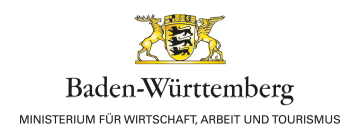Project results
In the QMag project, Fraunhofer researchers have investigated and further developed quantum sensors for specific industrial applications:
Material testing
In material testing, OPMs and NV magnetometers can be used in complementary ways: While OPMs provide a dynamic signal from the entire sample, NV magnetometry can be used to measure the magnetic properties of individual damage on the micro- and nanoscale in detail.
Both technologies work at room temperature and are suitable for industrial applications. The research results show that the quantum magnetometers detect changes in the magnetic field of the samples even when the material fatigue is not yet visible. The researchers used OPMs to measure the changes in the magnetic field of ferromagnetic material samples while they were subjected to cyclic fatigue. They have thus demonstrated that quantum magnetometers detect the smallest material defects much earlier than conventional technologies. It was also possible to shorten the measurement time, which is very important for use in industrial processes such as component testing.
Biomedicine
The researchers have also succeeded in developing a new NV magnetometer that leads to faster results in material testing and even enables further applications: the wide-field magnetometer measures magnetic fields over a large sample area in a very short time and is therefore suitable for rapid measurements in industrial applications. The wide-field magnetometer can be used for the characterization and optimization of ferromagnetic materials, but it is also very well suited for applications in biomedicine and medical technology. Organic samples can be examined non-destructively and with imaging.
Flow measurement
The researchers achieved a further success with the use of OPMs in flow measurement: they have developed a completely new method for measuring the flow velocities of liquids in a pipe based on OPMs. Magnetometric flow measurement is a non-contact method that can be applied to a wide range of media and is suitable for use in process control. This method represents a significant advance, as previous methods of flow measurement are usually invasive.
Chip industry
The project team also investigated the use of quantum magnetometers in micro- and nanoelectronics and chip production and identified enormous potential: In quality control, quantum magnetometers can be used to measure electrical circuits and immediately detect faulty transistors, for example.
Testing facilities for the industry
In order to make the research results accessible to industry and to test the technologies developed for specific applications, two testing facilities were set up as part of the project. A magnetically shielded room has been installed at the Fraunhofer Institute for Physical Measurement Techniques IPM, which can be used for test measurements.
In order to facilitate the transfer of quantum magnetometers to industry, a further testing facility was set up at Fraunhofer IAF, which contains several NV magnetometers. It enables interested companies, especially SMEs and start-ups, to evaluate the benefits and potential of quantum magnetometers for their specific requirements.
 Fraunhofer-Gesellschaft
Fraunhofer-Gesellschaft
